- Food for ants
- Insect food in nature
- Predator Ant Food
In nature, ants live in colonies, building dwellings with underground passages and raising offspring. In addition to forest ones, there are also red-headed domestic and predatory representatives of them, attacking animals much more than themselves. What the ants living in human habitation and in the nature eat depends on their type and territory of habitat.
Hierarchy in the anthill
Anthill - a kind of society, almost democratic, in which everyone carries out their work depending on their status:
- Workers or foragers - are required to deliver food, take care of all residents and protect their home from enemies, eat ants what they find when searching for food, as well as supplies in the colony itself.
- Uterus - female ants, laying eggs, eat the most delicious and necessary protein foods.
- Males - designed for mating with a female, after which they die.
- The larvae are divided into 2 groups: some feed themselves, others need constant feeding, which is what all adults do, specially preparing food for them. Depending on the diet of the larvae in the future, after pupation, they become either workers or uterus for the production of offspring.
Food and its distribution
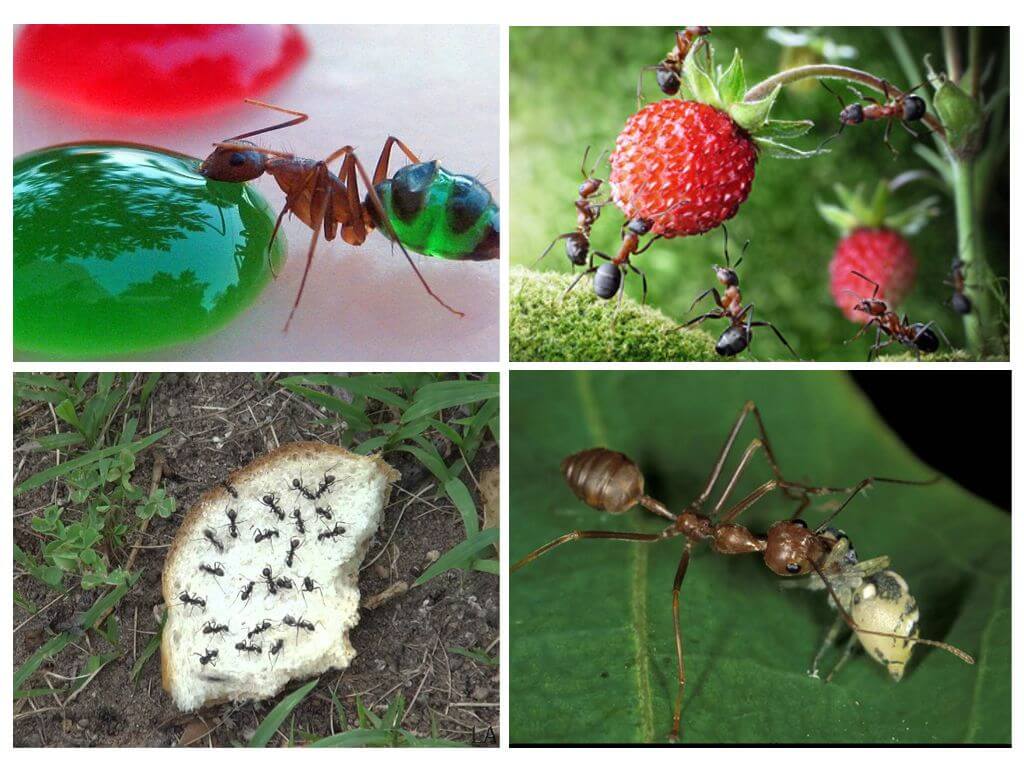
Ants belong to omnivorous insects, the diet of which depends on the habitat. The main life rule of their behavior is to find a piece of food and deliver it to the anthill, after which all stocks are distributed among the residents:
- Growing ant larvae need to feed on animal protein, i.e. eggs or the remains of other animals in the forest; dairy products and waste from egg dishes to the apartment.
- Adults prefer to eat lighter foods: fruits with pulp, nuts, roots and plant juices, in a living room - sugar, honey and all sweets.
- Most species of ants observes a carbohydrate diet, which includes juices from plant leaves and a pad - sweet insect secretions, the most popular of which is aphid.
Interesting!
Diet forest ants is 60% paddy so they contain a large number of aphidswhich can be milked constantly.
During the day, ants eat everything they find in the forest several times: either on the road, collecting and transporting food, or in the anthill itself they absorb the supplies. In autumn, they actively collect and stack all the food in their home, after which the anthill closes for the winter. However its inhabitants do not sleep in winter, they continue their vigorous activity, feeding on collected reserves throughout the cold period.
As soon as the sun warms up, the entire population of the anthill goes to work, starting the search for everything edible in the forest. As in other warm months, in the spring they feed on awakening insects, fresh plants and everything that can be eaten.
On a note!
In severe frosts, the anthill population hibernates and can starve for quite some time. In the northern regions of Russia, the period of suspended animation can last up to 9 months. At such a time, they feed not only on food supplies, but also on trophic eggs, which were laid by the uterus and did not turn into larvae.
Nutrition in nature
Forest ants living in the middle lane feed on everything they find in the forest or field:
- larvae and other insects;
- small invertebrates;
- cereal and grass seeds.
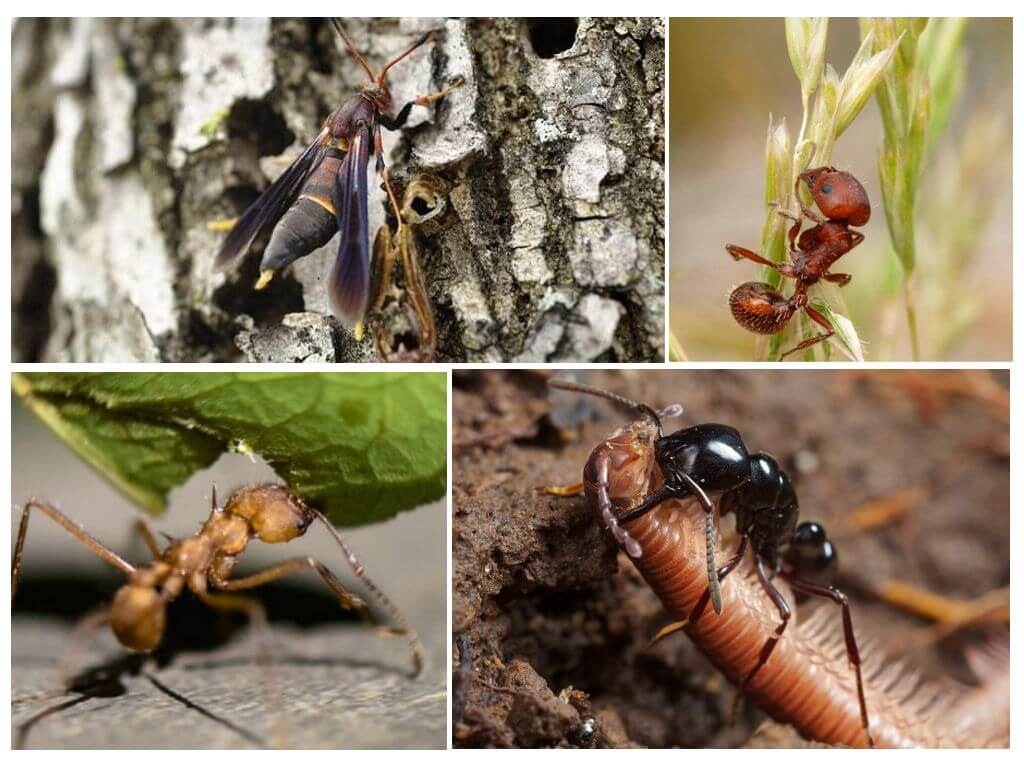
What ants eat in nature depends on their type. Among them there are those who eat only 1-2 products:
- woodworkers - eat gum, i.e. wood tar released after damage to tree bark;
- insect reapers they eat grass seeds, the food is solid enough, so the "soldiers" have powerful jaws to grind the seeds to a pulp state, after which all the inhabitants of the colony can eat it;
- leaf cutters - they collect and chew pieces of leaves into gruel, then storing them in one of the chambers of the nest for breeding mushrooms, which the ants eat, the leaves themselves are not eaten;
- centremexes - eat only termites;
- dracula is a very interesting species: they feed their larvae with insects, and the ants drink only the juices that these larvae produce;
- Ponerins - specialize in various species of insects.
Predator Ant Food
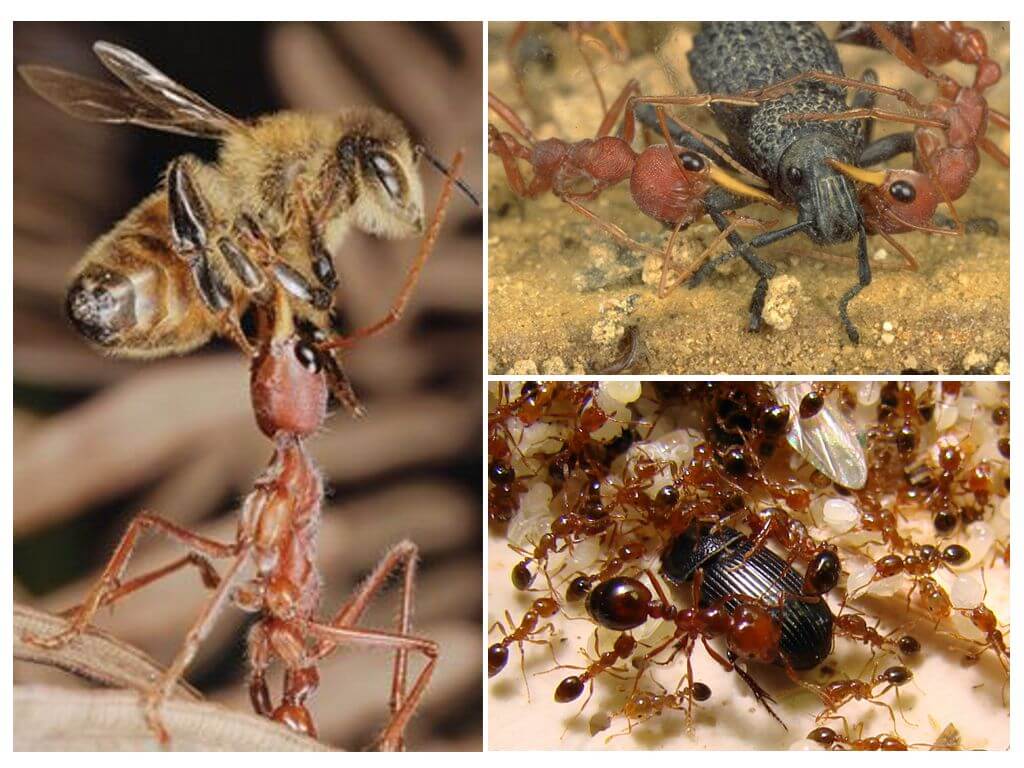
The nutrition of ants living in various tropical countries is diverse in diet and in most of them they are predators:
- Nomadic or stray - refer to the most dangerous ants in the world, predators and eat animal food: insects and their larvae, small lizards, frogs and even small chicks, they also enjoy wounded or dead animals.
- Bulldog - A very interesting predatory species of ants, which has powerful jaw-mandibles that help in hunting: it collects small insects and invertebrates, which feeds its larvae.
- Red fire ants they eat various insects, in their habitat they reduce the number of agricultural pests, destroying cotton weevils and sugarcane moths. They attack and drive away their brothers.
Interesting!
Exist honey antswho specially fatten some of their comrades to the state of a “barrel” that is unable to move and lives in a nest. When there is a period of famine or drought, the "canned" ants secrete syrup, which is the food for the other members of the colony.
Food of domestic and garden ants
Almost all ants eat at home. They are ways to find food even in the cleanest and most tidy apartment: pick up any bread crumbs, a little sugar cake or a drop of butter.
Living in human habitation, a room ant eats the most diverse food, literally everything that is in an apartment or house: bread, various cereals, sweets, dairy and meat products, sausages and even spices.
Black garden ants apart from small insects, they also eat excrement from farmed aphids. They specially plant aphids on plants in the garden and in the garden, carefully take care of their "farm", protecting them from other pests and from negative weather phenomena. To drink the sweet pad secreted by aphids, the ant tickles her, from which a drop of juice appears, and the “shepherd” drinks it.
Ants eat in nature and in human housing completely different food that they can find, and also depending on their position in the anthill: the best food goes to always growing larvae and senior ones.
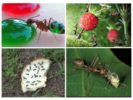
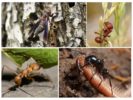
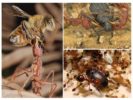
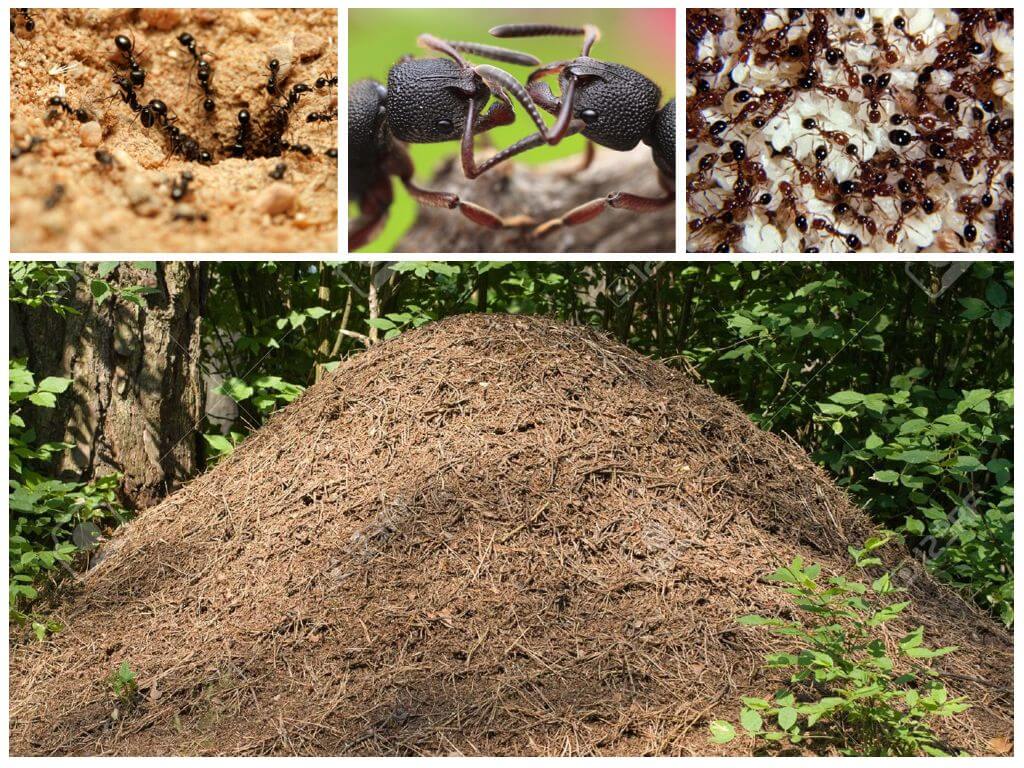
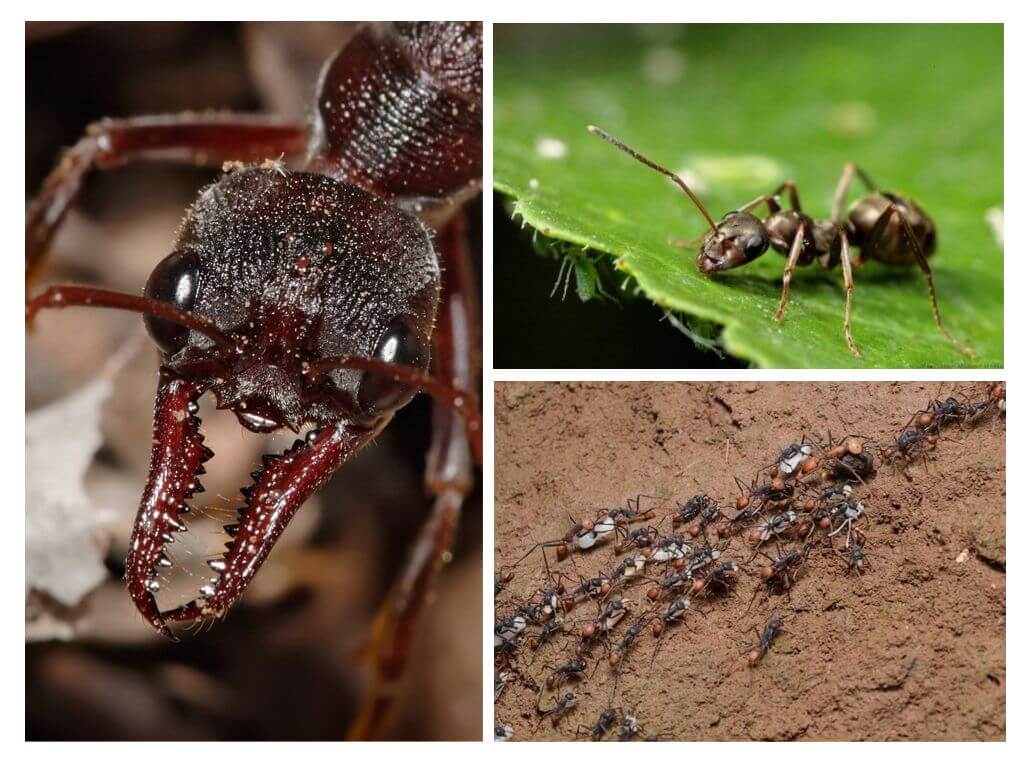
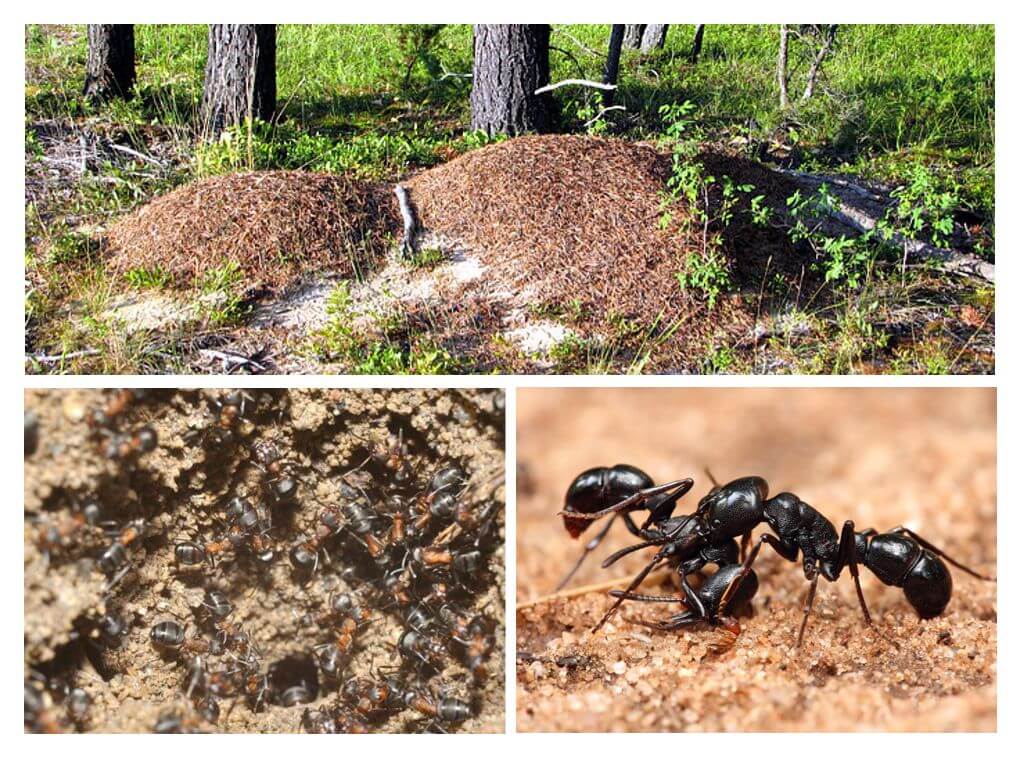
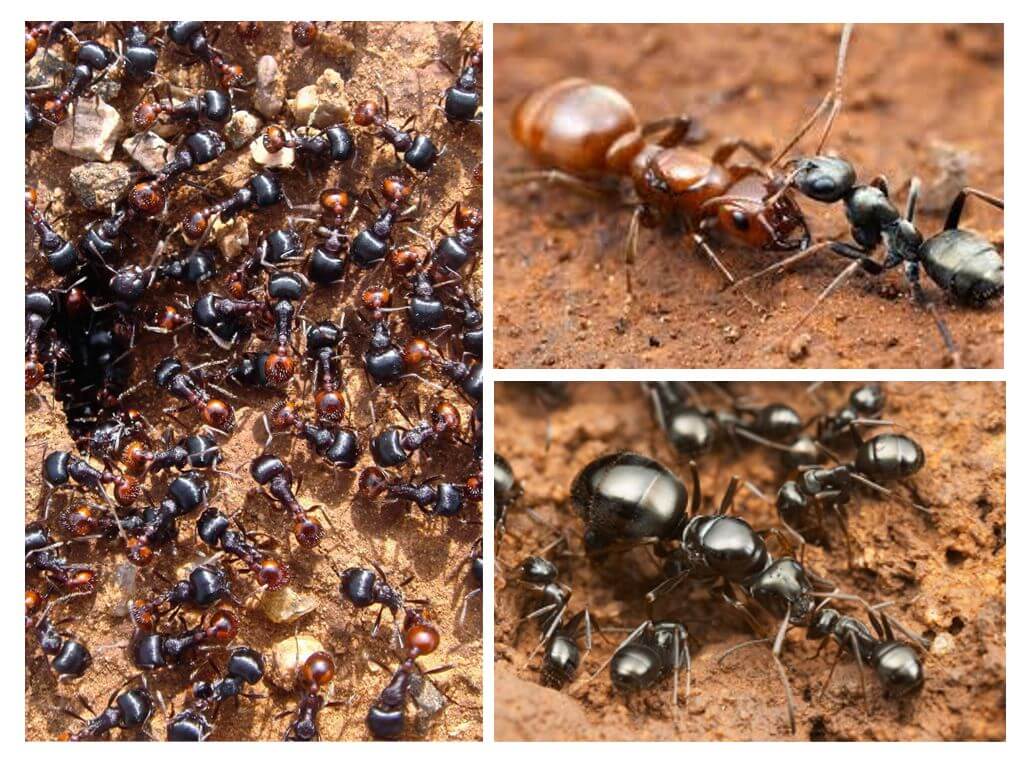
In my opinion, the ants living in the house generally eat whatever they find from the products, but most of all, of course, they love everything sweet: jam, honey, sugar. We have them, as they settled in the garden house: they walked in whole paths. It was interesting to watch: you put a piece of sugar on the veranda, after half an hour already a path from goose bumps is coming towards him.
About leaf-ants: I saw such people in the forest, a company is walking along and dragging one large leaf together, I kept wondering what they were doing with it. It turns out that they don’t eat them, and they breed mushrooms, I only found out from the article.
But such a picture always surprised me: a dead beetle lies in a forest on a path, and a whole anthill paved paths to it, and the beetle rushes about, like mad, in pieces. After a couple of hours, you’ll look, but already he’s gone, ate.
A very picturesque and bloodthirsty picture turned out ...
I always admire how ants quickly find food, throw themselves on the whole anthill and drag themselves away for food. This is especially noticeable in the forest when they swarm around a beetle or a dead butterfly. After all, they clear the forest of carrion, which means they bring benefits.
In the forest, they can also bring benefits, but when you get started, you won’t smoke them, everyone likes delicious food and rushes to feast on the whole colony at once.
After I arrived in my garden, I discovered that ants occupied zucchini, planted aphids there, and live happily ever after, aphids "milk". And the poor zucchini is bent, I had to urgently take action and clean up the “ant farm” with the help of ash from the fire.
Yes, I have so ants, along with aphids, killed a bush of currant. They settled on it and, while I was in the city, the poor currant began to dry out.